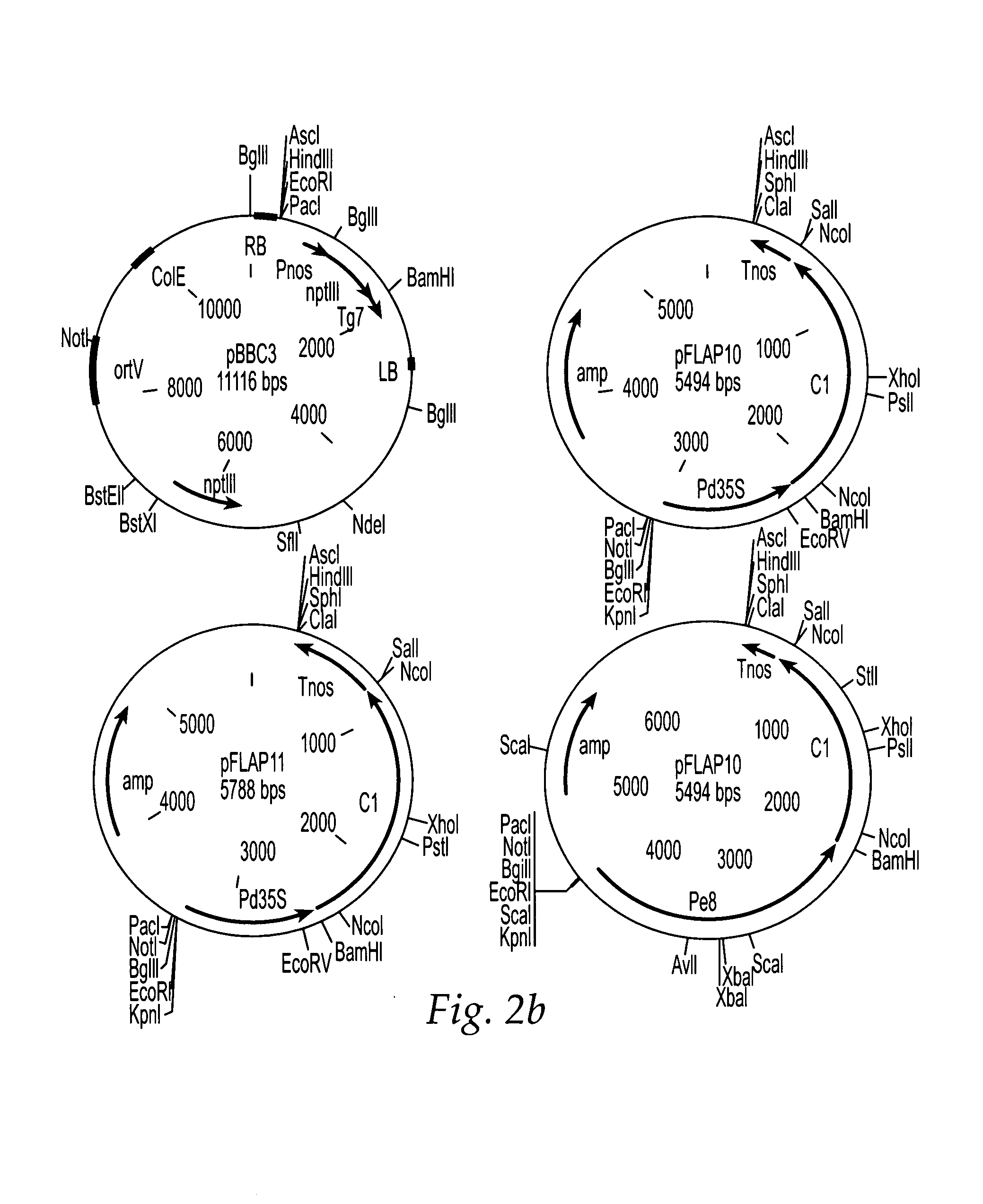Process for increasing the flavonoid content of a plant and plants obtainable thereby
a technology of flavonoid content and plant, applied in the field of improving the nutritional content of plants, can solve the problems of requiring time, and achieve the effect of increasing the activity of chalcone synthas
- Summary
- Abstract
- Description
- Claims
- Application Information
AI Technical Summary
Benefits of technology
Problems solved by technology
Method used
Image
Examples
example 1
Plant Material
[0109]All experiments can be performed using normally available processing tomato lines as the starting material or salad varieties. FM6203 is processing tomato line and is comparable to the commercially available line “Amish paste”. Ailsa Craig is a suitable salad variety.
[0110]Plants of tomato line FM6203 was grown in a glasshouse with a 16 h photoperiod and a 21 / 17° C. day / night temperature.
example 2
Bacterial Strains
[0111]The Escherichia coli strain used was:
[0112]DH5α supE44, D(lacZYA-ArgF)U169, f80lacZDM15, hsdR17 (rk−, mk+), recA1, endA1, gyrA96, thi-1, relA1, deoR (Hanahan, 1983).
[0113]The Agrobacterium strain used was Agrobacterium tumefaciens LBA4404 (Hoekema, 1985).
[0114]Transformation of E. coli DH5α was performed using the method of Hanahan (1983).
[0115]Transformation of Agrobacterium tumefaciens LBA4404 was performed according to Gynheung et al., (1988).
example 3
Analysis of Endogenous Expression of CHS and FLS in Ripening Tomato Fruit
[0116]Northern analysis was used to determine the level of expression of the endogenous chs gene(s) and the endogenous fls gene(s), during FM6203 tomato fruit ripening.
[0117]Total RNA was isolated from the peel and flesh from FM6203 fruit at green, breaker, turning and red stages of ripening and also from young leaves according to the protocol of Van Tunen et al., (1988). For Northern analysis, 10 μg of total RNA was loaded on formaldehyde agarose gels and separated by electrophoresis at 25V overnight according to Sambrook et al., (1989). Separated RNA was then blotted onto Hybond N+ membrane (Amersham) overnight according to Sambrook et al., (1989).
[0118]For detection of endogenous chalcone synthase transcripts, Petunia hybrida cDNA fragments encoding chalcone synthase (chs-a) were used as a probe. These fragments were obtained by RT-PCR using total RNA extracted from closed flowers from Petunia hybrida W115 a...
PUM
| Property | Measurement | Unit |
|---|---|---|
| thick | aaaaa | aaaaa |
| temperature | aaaaa | aaaaa |
| particle size | aaaaa | aaaaa |
Abstract
Description
Claims
Application Information
 Login to View More
Login to View More - R&D
- Intellectual Property
- Life Sciences
- Materials
- Tech Scout
- Unparalleled Data Quality
- Higher Quality Content
- 60% Fewer Hallucinations
Browse by: Latest US Patents, China's latest patents, Technical Efficacy Thesaurus, Application Domain, Technology Topic, Popular Technical Reports.
© 2025 PatSnap. All rights reserved.Legal|Privacy policy|Modern Slavery Act Transparency Statement|Sitemap|About US| Contact US: help@patsnap.com



